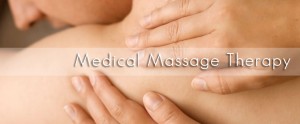
Sometimes, because I live in the world of massage and have embraced it so fully, I forget what the general perception is. When I am reminded, I’m always surprised how little the medical applications of massage are understood generally. So, for that reason I’m going to share them here—not because you don’t know them, but just as a reminder to continue to educate your clients.
Massage is, in addition to anything else, directly impactful to the musculoskeletal tissues of the body which include the muscles, ligaments, tendons, as well as the fascia that surrounds the muscle groups.
- In the case of a micro-trauma, where part of the muscle, tendon, or ligament is torn, commonly called a sprain or a strain, the muscles surrounding the area might be very tense, compensating for the injured tissue. You could use some friction to help elongate the compensating muscles back into shape.
- If there is a knot, you may find that trigger point work is super-useful.
- Chronic adhesions that are tough and feel ropey benefit from cross-fiber friction techniques. While those aren’t gentle or relaxing, they are effective. If there’s anything that’ll get your muscle restored to full action, good old cross-fiber friction will.
- Sometimes we use heat and ice, or hydrotherapy, and sometimes we’ll do stretches, either active or passive, and all of that is part of the work we do when we’re applying massage as a medical technique.
If I could, I’d like to make a clone of myself and go visit every surgeon in the country and ask them: “Did you operate on this person? Did your work create some scar tissue? Do you know that scar tissue can possibly be preventing full range of motion? Given how well it can improve outcomes, why haven’t you recommended massage to all your post-operative patients?” I know it sounds crazy, but that’s what I’d do. Why? Because massage is one of the absolute best methods for removing scar tissue and allowing patients a full recovery.
